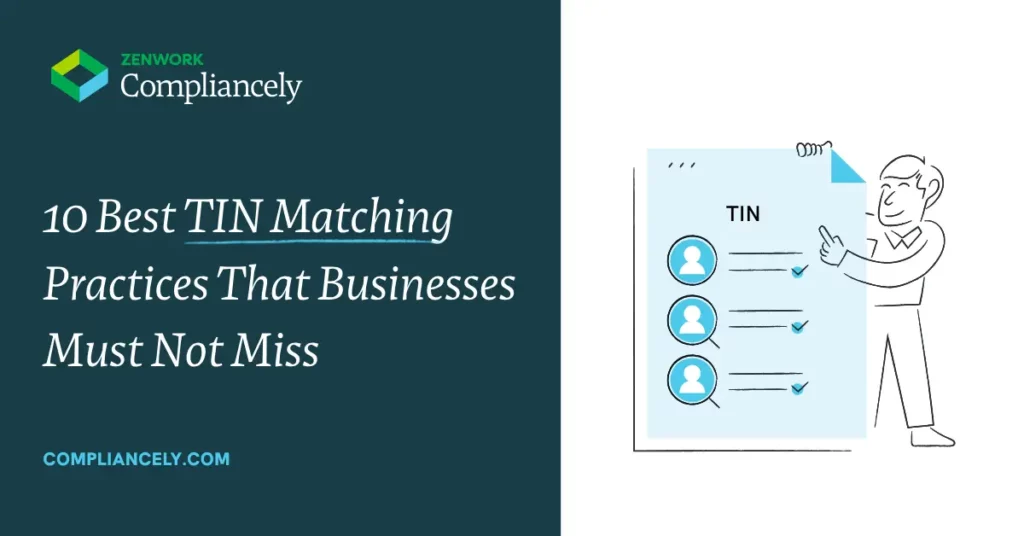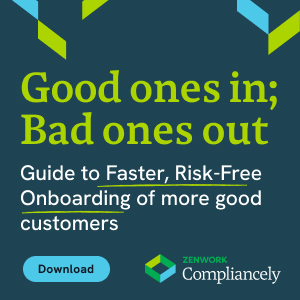10 Best TIN Matching Practices That Businesses Must Not Miss

The gig economy, as we know now, is playing a major role in enabling services for businesses that want to hire external help on a contractual basis. Be it design, communications, transport, or any other requirement, you can find the necessary resources in the gig economy at reasonable rates.
While the affordability of the gig economy is giving it the acceleration it needs, there are some rather dark or grey areas within this fast-emerging industry, which are hindering its growth.
For established businesses, finding verified and established vendors in the gig economy is a challenging task. The process of weeding out the verified ones from a pool of unverified profiles is quite a complex task and no hiring entity has that kind of time.
So, identity verification, and more specifically, TIN matching, is enabling hiring entities to verify the vendor profiles prior to onboarding. This further helps with streamlining KYC compliance and improving IRS reporting protocols (think 1099-NEC).
There is no denying that most businesses embrace TIN matching in some way or another. But if you’re looking at optimizing your compliance operations for the better and reducing the stress on your accounting teams, you might want to re-evaluate how things have been so far and consider the following best TIN matching practices. What’s more? These TIN matching practices will allow you to achieve compliance productivity at a faster rate.
Let’s take a look.
1: Tweak your vendor onboarding process
Before you proceed to follow any of the practices, be prepared for some minor tweaks and changes to your existing process. These are more optimizations than changes, which will help streamline your overall vendor onboarding and vendor compliance processes in the long run.
Tweaking your vendor onboarding process begins with pushing your TIN matching process to the first, which will help you assess the risk of a vendor and give you the necessary identity verification insights to validate the credibility of the vendor.
2: W-9 first. Onboarding next.
Always start with a W-9 Form to obtain the TIN and name information from your vendors. This will allow you to document the medium of communication, validate the details as provided by the vendor, and follow up with your vendor should the TIN and name combination doesn’t match the IRS records.
A W-9 Form acts as a formal instrument of communication between you and the vendor and it implies that your business is taking compliance protocols seriously.
3: Hold off work until TIN Matching is completed
Once you have sent the IRS Form W-9 to a vendor, do not be in a rush to get things started. Allow your vendors to furnish the required TIN and business information in the W-9 form and hold any vendor contracts until the W-9 forms are returned with valid TINs.
Validates the vendor TINs quickly with Compliancely’s real-time IRS TIN Matching.
4. Double-check TINs for enhanced accuracy
If you’re working with more than a handful of independent contractors, it is crucial to ensure that the TINs furnished by your vendors are accurate. You can even conduct bulk TIN matching checks to check the accuracy of the TINs within minutes through Compliancely. The process becomes crucial as you keep adding more vendors to your business.
5. Organize your vendor data
Do not wait until after the payments have been made to document and organize your vendor files. Prepare a master sheet for your vendor profiles and only add the verified profiles that you have onboard and continue to update the sheet as each transaction takes place. This includes updating the sheet with vendor TINs, names, tax withholdings, payments, and other details in chronological order.
This information will help you draft and report your 1099-NEC forms easily at the end of the year. With your organized vendor data, your accounting teams are no longer scrambling for TINs or vendor transaction information during the year-end rush, saving your business a whole lot of time and effort.
6. Withhold taxes from vendor payments
Most businesses follow the 80-20 rule where 80% of the payments are made to the vendor right after the work is delivered by the vendor. The remainder is paid at the end of the year, which will only be released by the hiring entity until after the required TIN and other tax details are furnished by the vendor.
Generally, hiring entities do not have to withhold any taxes from vendor payments. However, depending on the type and nature of the transaction, you might need to withhold a percentage of the payment, all of which must be reported on Form 1099-NEC [1].
7. Don’t go overboard with W-9 solicitation
While it is necessary for you to obtain the TIN and business information from your vendor, there is no need to repeatedly request the vendor to provide this information every year.
For example, once a vendor sends a completed W-9 form and you have verified the TIN and other business information, you can be assured knowing that the details will remain the same for a few years after.
And you have solutions like Compliancely’s real-time TIN matching, which will allow you to check if the TIN and name details are recent or historic. Depending upon your TIN matching searches, you can follow up with vendors who have provided historic or outdated information.
8. Scale-up TIN Matching as you add more vendors
When you add more vendors, TIN matching becomes a daunting and tedious task that requires exceptional focus and attention to detail. This can be addressed with bulk TIN matching solutions offered by Compliancely. You can check as many as 100,000+ TINs in less than a minute, allowing you to check, double-check, and even tripe-check your vendor TINs prior to reporting.
If you’re a freelance aggregator like Fiverr, Etsy, or Uber, bulk TIN matching must be placed during the initial onboarding stages of your process to ensure that the bulk TIN data is checked accurately per the authorized IRS data lists in real-time.
9. Tackle ownership transfer with predefined processes
The gig economy is all about change. So, don’t be surprised when you learn that your vendor’s business has been acquired by a newer entity or a new individual. The regulatory reporting information, such as the TIN, name, business name, address, and more may also change with the new ownership.
During the initial vendor onboarding process, prepare a clear adaptation plan for an event in which the vendor’s business might undergo ownership transfer. This plan will allow your organization to adapt to the new changes with negligible efforts.
10. Do not procrastinate with B-notices and penalty assessments
Despite all the efforts to ensure that you have got the right TINs, it is possible to still report an incorrect TIN. This could be due to an error in manual data entry or the form completion process. Either way, when the IRS sends a B-notice, which is a sign that your returns have been rejected due to incorrect TIN reports, you cannot take that easily.
The IRS will cite the incorrect TIN reports and prescribe a timeline, before which you must address the incorrect TINs and re-file the returns with the corrected TIN information.
It is essential for businesses to understand that each incorrect TIN reported will be hit back with a $250 penalty + interest for every month until the amount is paid in full.
Further, when you deliberately ignore the IRS notices and disregard the prescribed deadlines, your business might be assessed with more penalties, which can be even more taxing than the actual tax you owe.
Maintaining tax discipline in accordance with your TIN matching practices is absolutely important, which helps you follow through with the IRS deadlines and prevents notices and penalties.
